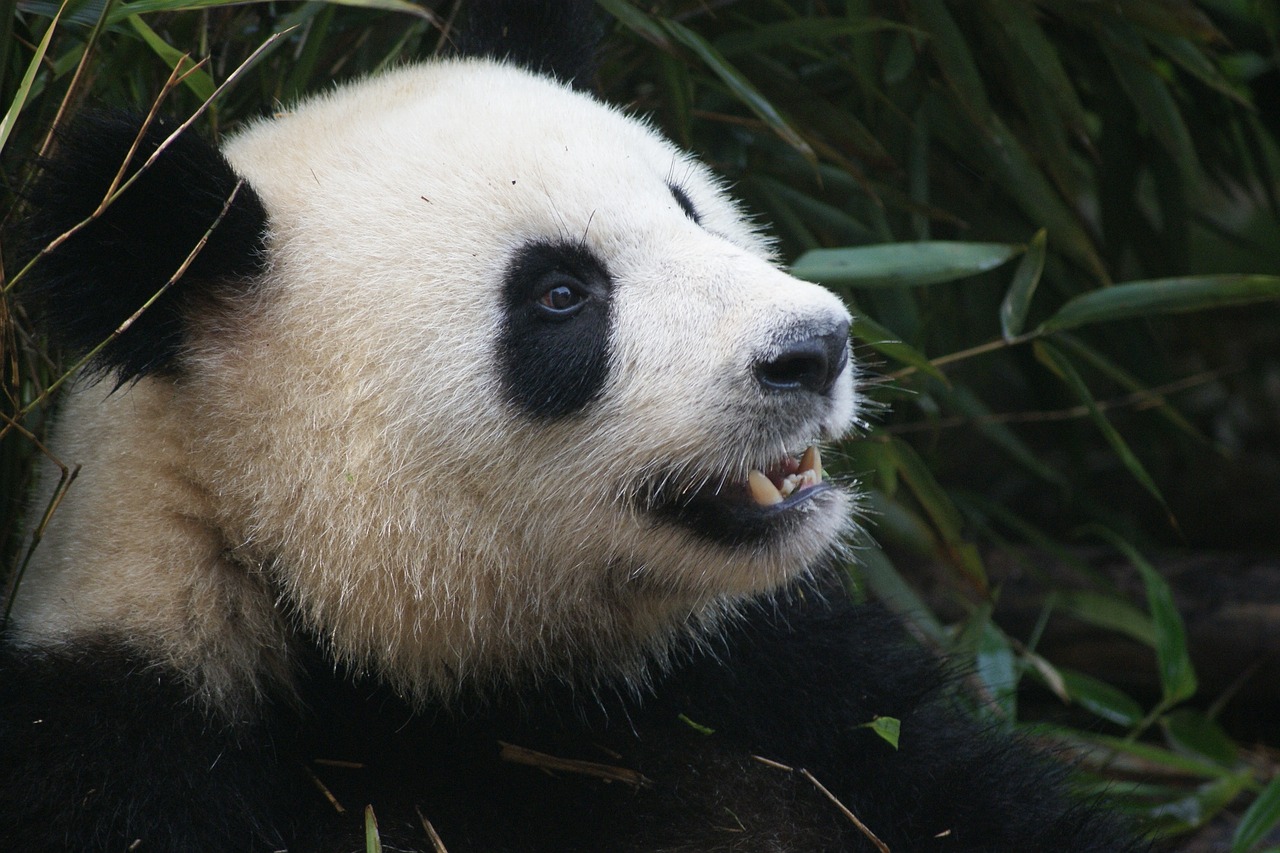 Giant Panda
Giant Panda
Native to central China, these adorable creatures have become the universal symbol for vulnerable species. Presently, as few as 1864 giant pandas live in their native habitat, while another 600 live in zoos and breeding centers around
the world.
The Endangered Panda Conservation is the world's leading institution in the preservation of the giant panda population. Working closely with our colleagues in China, our expert staff and scientists are actively seeking
ways to prevent the extinction of these species.
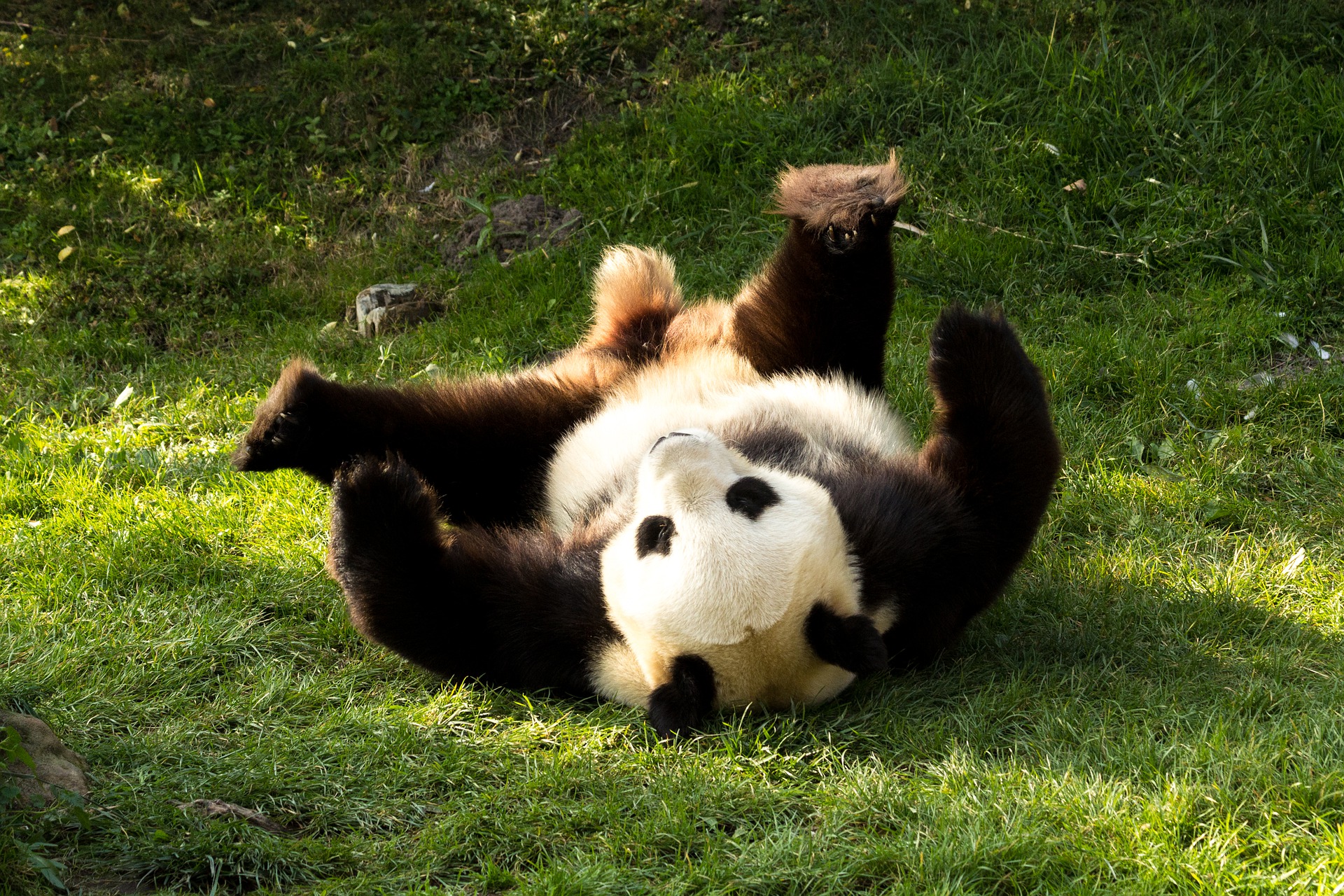 Physical Apperance
Physical Apperance
Easily identified by their thick distinctively black and white fur, giant pandas are a standout among the the bear species. Theirs ears, muzzle, eyes, shoulders, and legs are black, while the remainder of their body is white.
On all fours, giant pandas average between 60 - 100 cm (2 - 3 ft) tall at the shoulder, and between 100 - 200 cm (4 - 6 ft). They weigh in at about 220 - 250 lb (100 - 115 kg), with males being larger than females.
The most interesting
of their evolutionary traits is their protruding wrist bone which acts like a thumb.
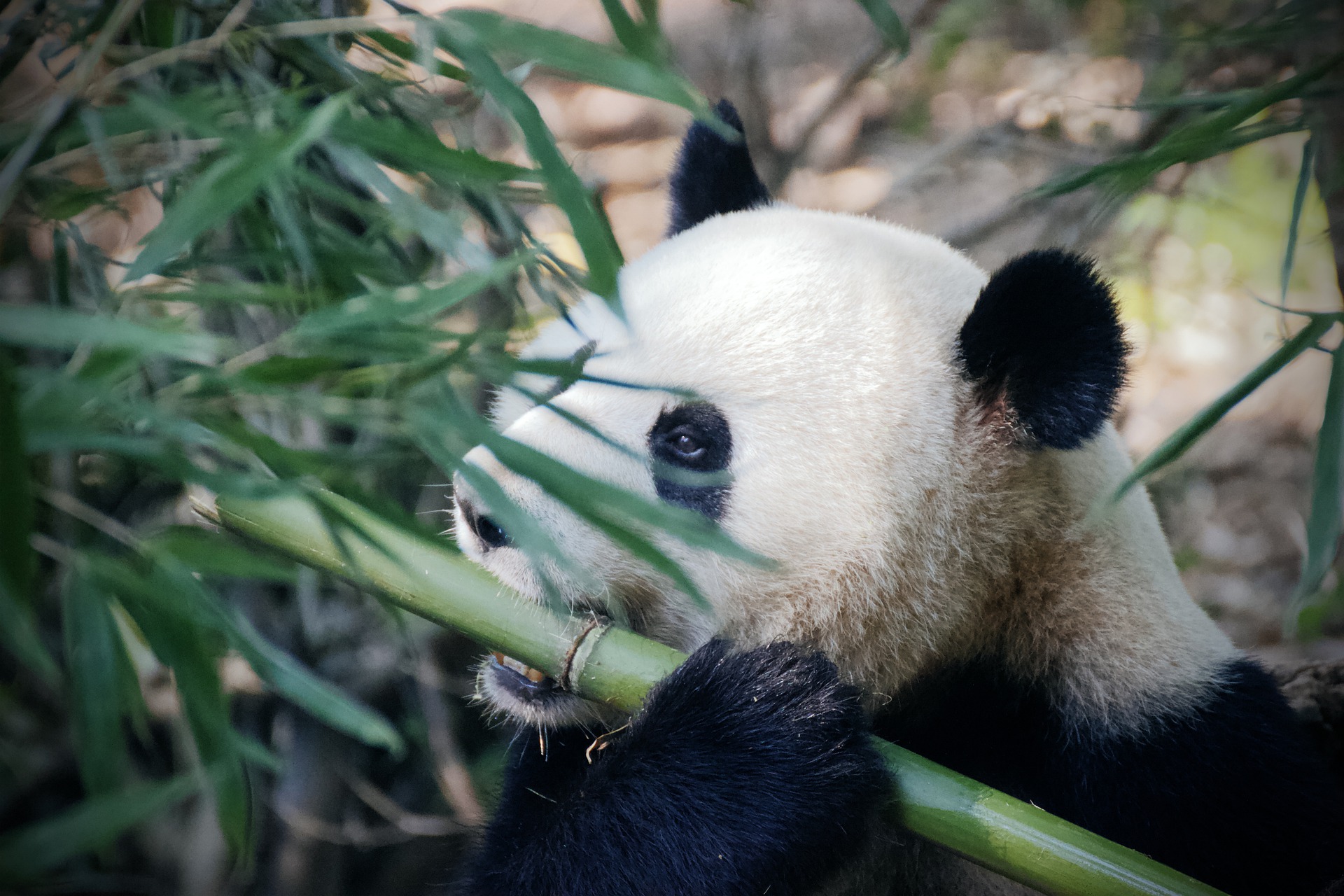
Food/Eating Habits
A giant panda usually eats in an upright position, resembling that of a human. This leaves the front paws free to grasp and eat bamboo stems.
Though giant pandas are capable of digesting meat, the most widely consumed food for these
creatures are the different types of bamboo found.
Maturity is reached between four to eight years of age, and giant pandas may be reproductive until about age 20.
Female pandas ovulate only once per year, in the spring. There is then a short period of two to three days where a giant
panda is able to conceive. Birth is then given from three to six months after mating.
Although females may give birth to two youngs, only one usually survives. A newborn cub weighs 3 - 5 ounces, and is about the size of a stick of
butter. Cubs do not open their eyes until they are 6 - 8 weeks old, and are not mobile until three months.
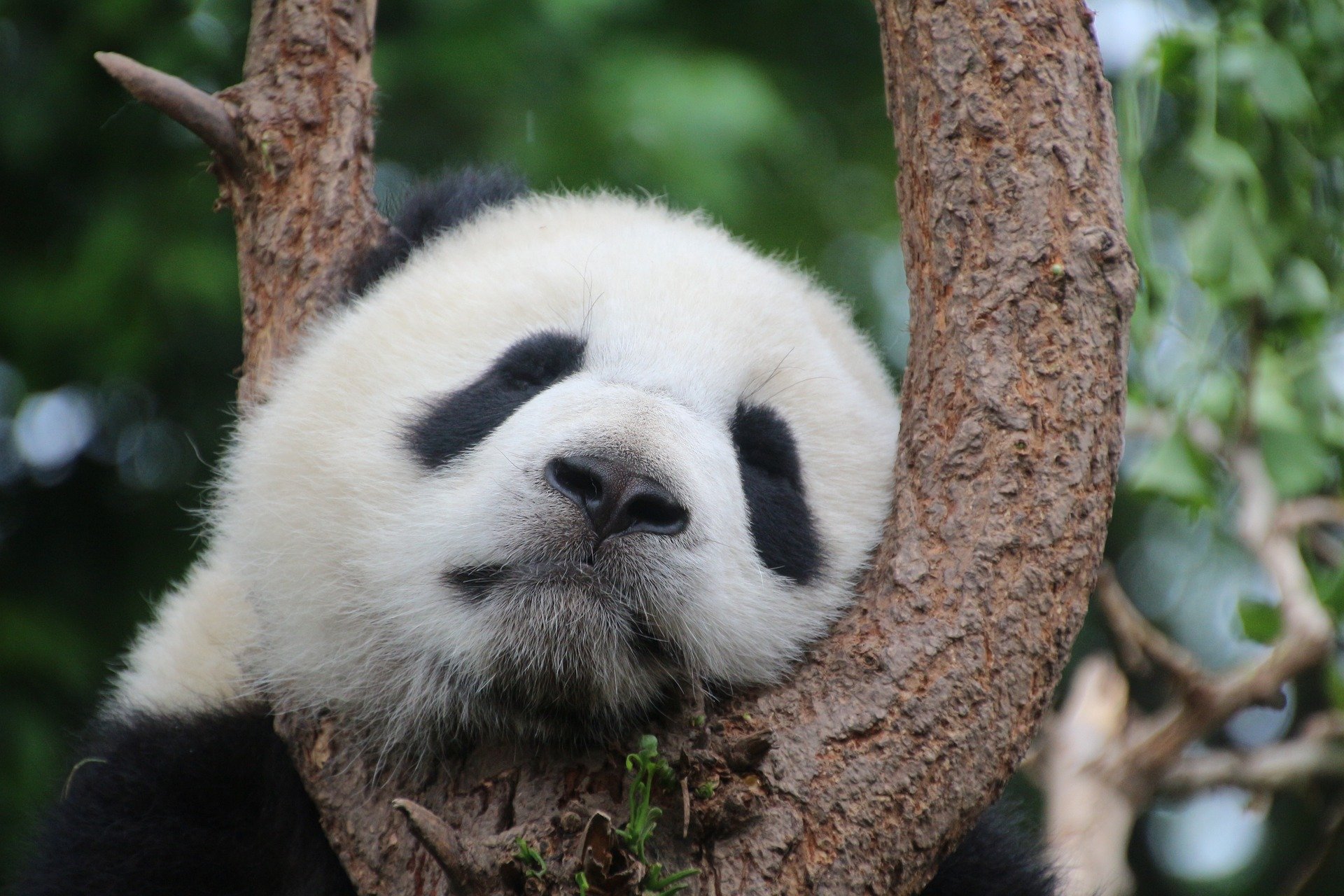 Sleep Habits
Sleep Habits
In the wild, giant pandas typically nap between feeding for two to four hours at a time. While resting, a giant panda continuously defecates. Most rest periods are two to four hours in duration, but may increase to six or more hours during
summer.
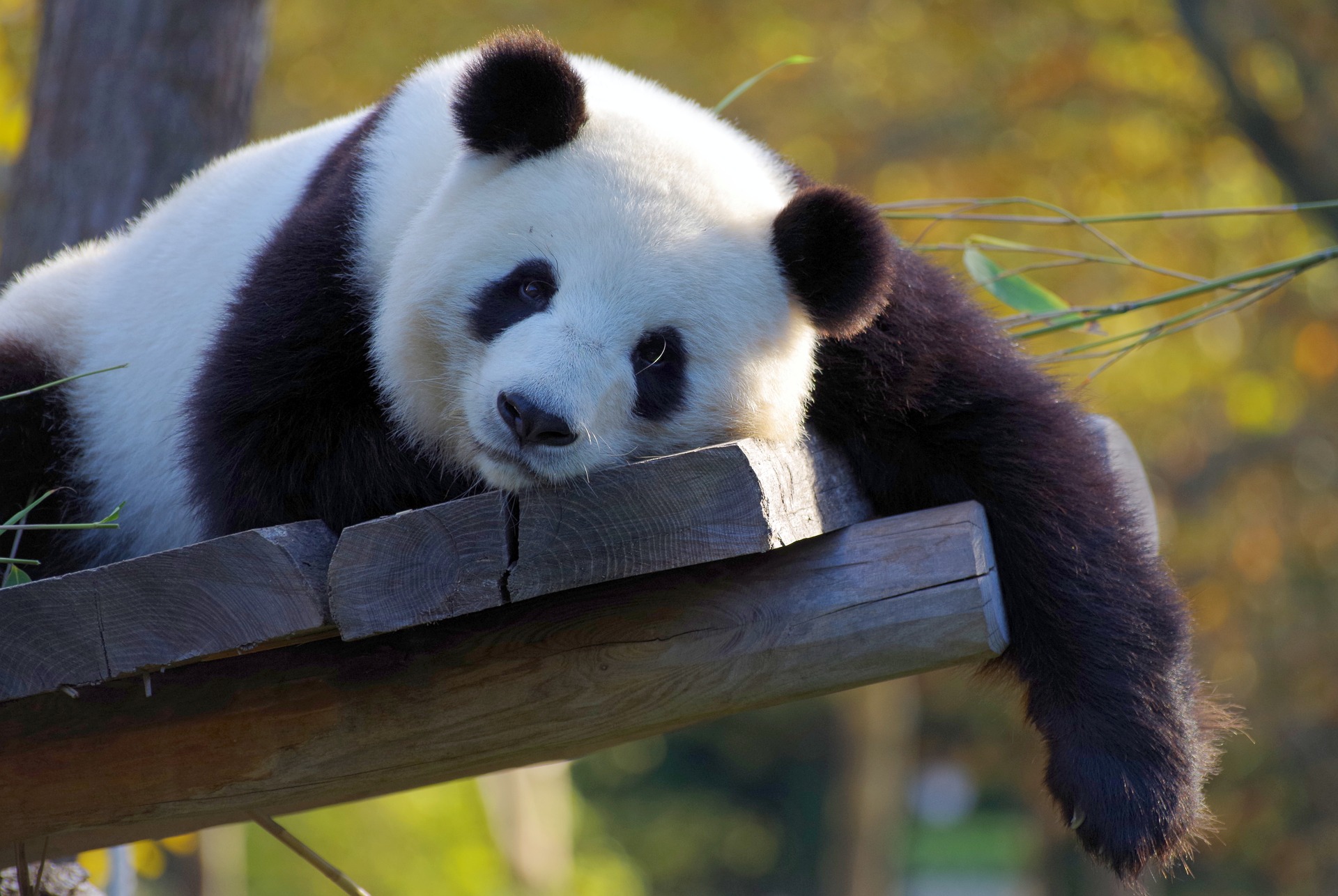 Lifespan
Lifespan
It is unsure exactly how long a giant panda may live for in the wild, but it is surely shorter than those in zoos. The estimated lifespan of a giant panda is about 15 - 20 years in the wild, and about 30 years for those in human care.